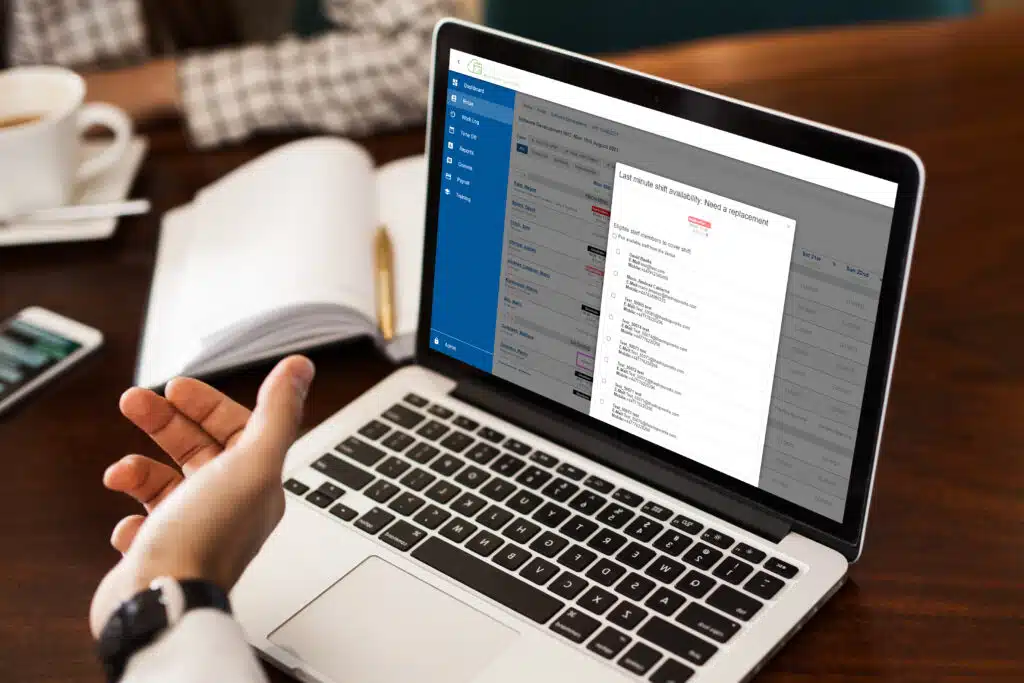Employee scheduling is defined as the process of predicting and planning the work time, shifts and needs for a business and assigning employees to fill each of those requirements.
In this article we try to answer your questions of what is employee scheduling so that you can have a great understanding of what it involves, what is a good scheduling tool to use and what functions it performs.
What is the definition of Employee Scheduling software?
Employee scheduling software automates or highly simplifies the employee scheduling process of creating and maintaining a staff schedule or “rota”. Automating the scheduling process generates better quality work rotas, saves administration time and if done correctly makes staff happier.

Who uses Employee Scheduling solution?
Now that we have look at what is employee scheduling in this section will explore who use is it. It is most often found where organisations have a large number of employees who meet some or all of the following criteria:
- Complex working patterns
- Variable staffing levels – i.e. peak times and quite times
- Multiple role types
- Inter related role types, for instance you need one qualified nurse for every 3 care assistants
- Hourly paid
- Shift, night time and weekend workers
- Larger numbers or complex organisations such as a retailer with multiple stores
- Remote or mobile workers
- Contingent workers (such as agency staff)
- Complicated contractual terms such as night time premium and overtime rates that can be hard to calculate the cost of
- Complex working time regulations or union agreements to follow
In short; people use employee scheduling software or e rostering to save time creating rotas and because the process is so complex that their existing methods aren’t producing high quality rotas.
Not all Workforce Management and Time and Attendance users need an advanced employee scheduling software. Some factories we have come across have very fixed staffing patterns and don’t vary their production levels by much. Their employee scheduling system could be very simple.
What does a high quality rota look like?
A good staff rota will meet all of the following criteria:
- The correct number of staff and roles to meet customer demand – often in 15 minute segments
- On budget
- Working time directive compliant
- Fair to all staff
- Meeting staff preferences
- Honouring staff leave requests
- Ensures the correct mix of skills and experience
- Clearly communicated to staff

What does a benchmark employee scheduling system look like?
To really answer your question of what is employee scheduling we need to also look at what a modern scheduling software should include:
- Cloud based
- High degree of automation or semi automation such as
- AI powered auto scheduling
- The ability for staff to store shift patterns
- The ability to build default schedules
- Demand curve by role to allow the rota to match customer demand
- Self service tools for staff to accept shifts, swap shits
- Tools for staff to communicate availability to the organisation
- Tools to communicate planned shifts to staff
- Access to skills, roles and other measures of staff ability
- Ability to be able to calculate the cost of every shift “on the fly”
- Ability to check every shift is compliant with WTD and other rules “on the fly
- Some form of weighting algorithm to allow the organisation to prioritise key attributes, for example staff wellbeing over costs
- Direct integration into other WFM tools
- Secure and GDPR compliant.

What is the difference between Employee Scheduling and Workforce Management?
Employee Scheduling is a subset of Workforce Management. A WFM system should include a range of different tools including employee scheduling. Some systems just do scheduling and export their schedules to a time and attendance or workforce management system.
We hope we have answered your question on what is employee scheduling
Still Have Questions Regarding Employee Scheduling?
Just fill in the form below to speak to someone from our expert team.




